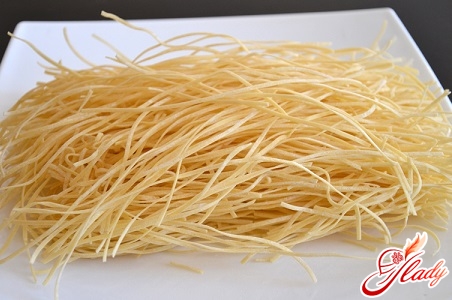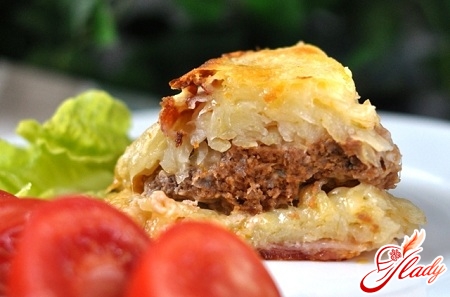
You can't do without this in your home kitchenculinary masterpiece, like a regular omelet. It is believed that the omelet first appeared in France. Then the recipe spread throughout the world. Now omelet recipes can be found in a provincial cafe and a fashionable restaurant. And in the life of bachelors, the importance of this product cannot be overestimated! This dish is tasty, satisfying and very healthy, because 100 grams of eggs contain 12.7 grams of protein, 11.5 - fat, 0.7 - carbohydrates, 0.8 grams of trace elements (potassium, calcium, phosphorus, iron, sulfur, fluorine), vitamins, and other biologically active substances. In addition, this product, unrivaled in simplicity and speed of preparation, is relatively cheap, and will suit both students and pensioners. However, it should be remembered that everything is good in moderation. Eggs are not recommended for consumption in case of liver and biliary tract diseases. Healthy people are advised to eat no more than 2 eggs a day, while the elderly can afford the same amount per week. In addition, it should be remembered that chicken eggs are sometimes infected with the salmonella pathogen. Therefore, they must be washed thoroughly and not drunk raw. And, of course, the eggs must be fresh. The suitability of eggs for food is checked as follows: pour water into a half-liter jar, dissolve a tablespoon of table salt in it and lower the egg. If it sinks to the bottom, it means it is fresh, if it floats somewhere in the middle, the egg is of medium freshness. If the egg floats, this product cannot be eaten. Large poultry farms of famous brands put the production date on the shell. Dietary (fresh) eggs are eaten for a week, table eggs - 25 days. They can be stored in the refrigerator for no more than a month. In addition, eggs are divided into:
- premium category (marked as “SV” in the labeling) - not less than 75 g;
- selected ("SO") - 65-74.9 g;
- 1 category (“C1”) — 55-64.9 g;
- 2 categories ("C2") - 45-54.9 g;
- Category 3 (“C3”) – not less than 35 g.

Flourless French Omelette Recipe
There are a lot of recipes for making an omelette.General rule: it works best in a frying pan with a thick bottom. Ideally, a separate frying pan is used for omelettes. But if you don’t bother, any frying pan will do: with or without a non-stick coating. Rub it with lard and heat it well. Further preparation differs slightly among different authors. A regular omelet consists of 2 eggs (a portion for one eater), which are beaten with a fork or whisk in some deep dish, add a tablespoon of milk (water, sour cream or kefir will do), and salt to taste. Salt is added during the beating process, not during cooking. You can also beat it with a mixer. In this case, the taste will be slightly different. Put two teaspoons or half a tablespoon of butter in the frying pan. Melt it over moderate heat, making sure it does not burn. Then pour in the beaten eggs. Spread the omelette evenly over the pan. It is very important to check after a few seconds to see if it has stuck. To do this, shake the pan, but be careful not to drop the omelette on the floor. If it has stuck, carefully separate it from the sides and bottom of the pan with a knife or flat spatula. Fry the omelette until done (5-7 minutes). Classic recipes recommend that the egg mass be viscous on top (but not runny), and that it be browned on the bottom. This recipe recommends cooking the omelette quickly so that it does not have time to cool down. And you should eat it slowly, enjoying the excellent taste.
Recipe for cooking with flour - a regular omelette
There is a recipe for making an omelette with the addition offlour. In this case, take 2 eggs, add 4 tablespoons of milk, 1 tablespoon (without a slide) of flour, salt, 20 grams of butter (one tablespoon). The omelet can be cooked either with or without a lid. At the end, cooks sometimes turn the eggs over to get an appetizing crust on both sides. Instead of butter, some recipes recommend taking sunflower oil. The classic omelet recipe is exactly this, it does not provide for any other additives. But what can stop us from filling it with vegetables, mushrooms, green peas, brains, pieces of sausage, ham, herring, or anything else? After all, eggs are a very versatile product in terms of compatibility with various ingredients. The minced meat is spread over one half of the omelet and covered with the other. Some recommend sprinkling it with parsley or dill on top. In addition to cooking omelets in a frying pan over an open fire (or on an electric stove), there are recipes for cooking in ovens. In this case, the baking tray with the omelette is placed in the oven for 8-10 minutes, heated to 180-200 degrees. There is an opinion that fried eggs and omelette are different dishes. Yes, in fried eggs, eggs are not beaten, but scrambled eggs are practically no different from an omelette. In the countries of the former USSR, an omelette is considered to be beaten eggs with the addition of milk (other dairy products or water), flour and salt. But the French do not add anything to the omelette. Everyone have a great mood, health and bon appetit!









